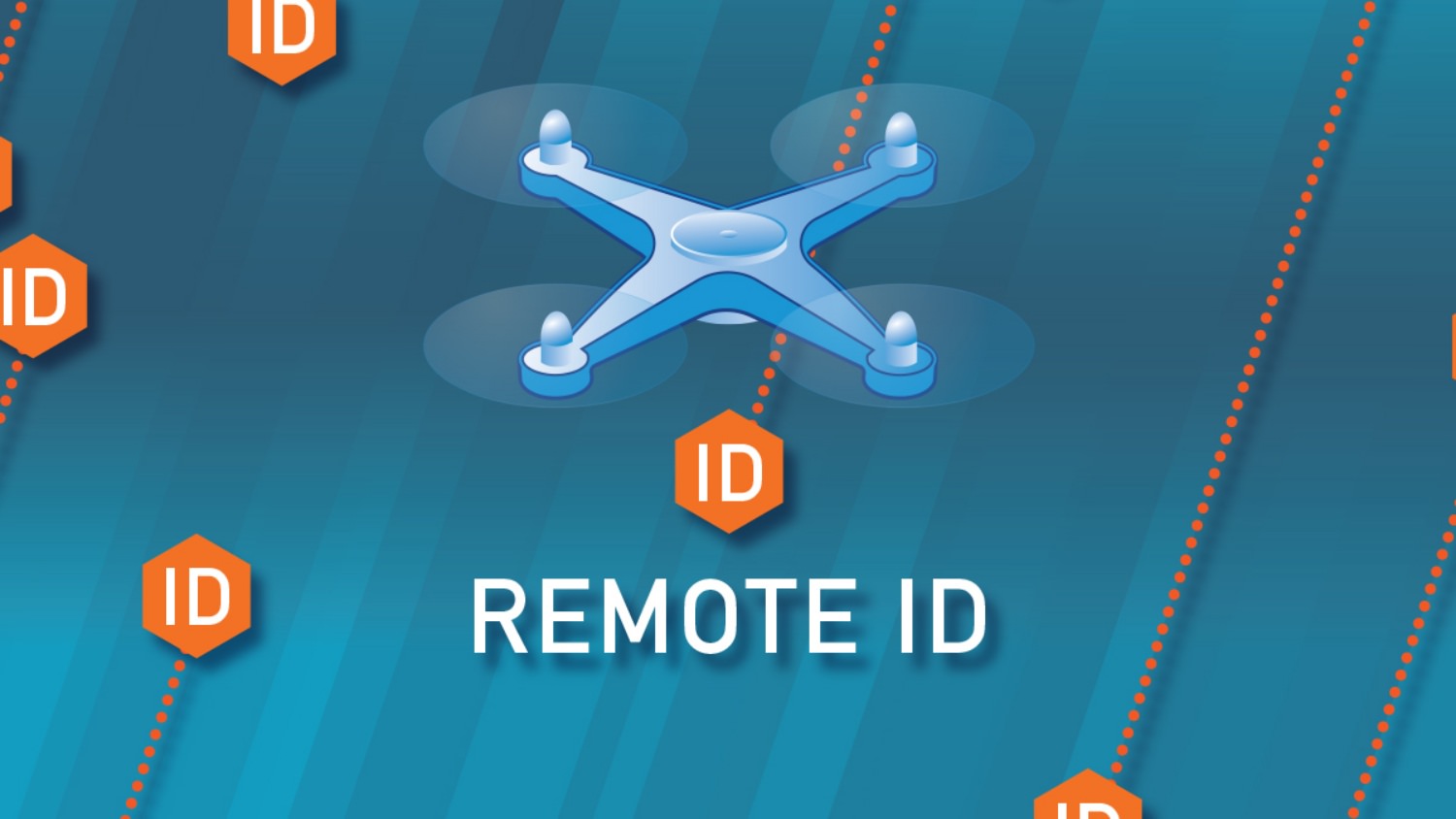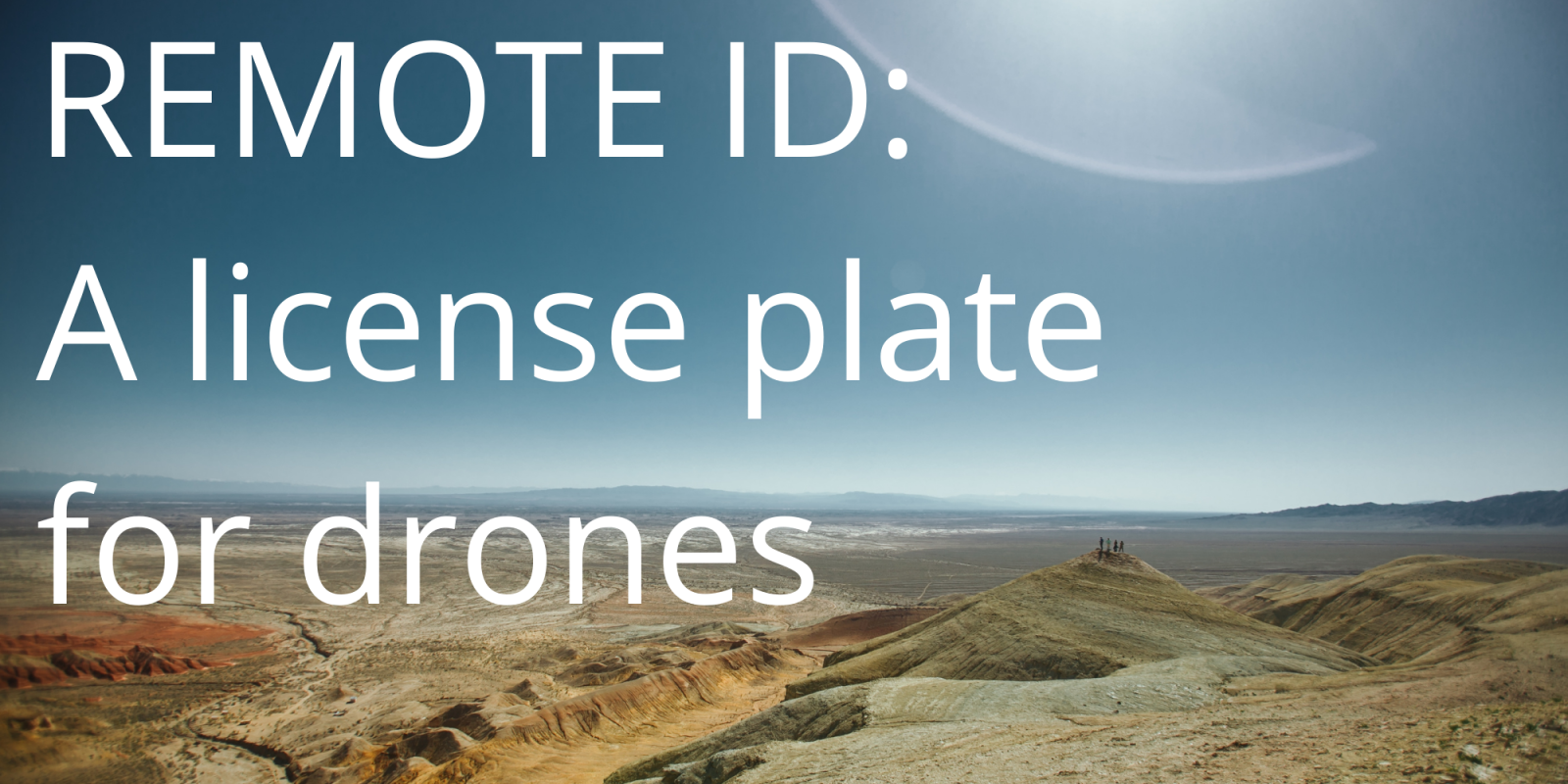It’s one thing to read through the Federal Aviation Administration’s new Remote ID Rule. It’s something else to understand, in a nutshell, what its implications might be for you. Let’s try to figure this out.
The number of drones in the US, not surprisingly, continues to grow. Drones, in fact, are now the fastest-growing segment in the entire transportation sector, according to the FAA. At the moment, there more than 1.7 million drones registered in the United States, and 203,000 FAA-certified remote pilots under Part 107. That means the new rules are going to impact a lot of people when they go into effect.
So what will it mean for you?
Remote ID is coming
Why do we need it? Well, the basic purpose is to balance the needs of those operating drones with the safety of the airspace and people on the ground. That means a better system of identifying who’s flying drones and where. So you can think of the Remote ID as a “digital license plate” that’s transmitted wirelessly from your drone.
That signal will allow people to identify the type of drone being flown and its trajectory remotely, using an app on their phone. Only those directly involved with airspace safety (FAA, law enforcement, etc.) will have the ability to access the registered owner’s name. So you don’t need to worry about strangers pulling down your personal data.
You do, however, need to worry about when this rule goes into effect, and whether the drone you’re flying at the time is enabled for Remote ID
Timing
There’s good news here. You’ve got plenty of time before any of this becomes real. But it’s worth starting to think about, especially if you earn a living with drones and have more than one of them in your fleet. Here’s how the timeline breaks down.
- Remote ID Rule announced
- Final rule published in Federal Register – sometime in January
- Rule goes into effect: 60 days after January publication
However, the rule itself has a long window before you (and drone manufacturers) have to do anything. The operational part of the rule doesn’t come into effect until 30 months after the rule itself goes into effect. In other words, you have about 32 months, nearly three years, before this becomes part of your daily ops.
How will it work
It depends on what you’re flying. If it weighs less than 250 grams – and if you’re not flying commercially under Part 107 – you don’t need to do anything. So if you have a Mini 2 or Mavic Mini, or some other sub-250 gram drone and you’re strictly recreational – you don’t have to do anything. Just keep on flying responsibly.
But for commercial pilots, and for all drones weighing 250 grams or more, you’ll need to have that Remote ID system in place roughly 32 months from now.
The system will work via WiFi or Bluetooth, but not across the cellular network (as some had expected). That means you will either need to buy a new drone (and manufacturers will undoubtedly be adding this feature to their products), or buy an external module that will attach to your drone and send the requisite signal. The FAA has its own particular language here, so let’s review:

Under the final rule, all UA required to register must remotely identify, and operators have three options (described below) to satisfy this requirement. For UA weighing 0.55 lbs or less, remote identification is only required if the UA is operated under rules that require registration, such as part 107. Operational rules take effect 30 months after the effective date of the rule.
1. Standard Remote ID Unmanned Aircraft:
- Broadcasts remote ID messages directly from the UA via radio frequency broadcast (likelyWi-Fi or Bluetooth technology), and broadcast will be compatible with existing personalwireless devices.
- Standard Remote ID message includes: UA ID (serial number of UA or session ID);latitude/longitude, altitude, and velocity of UA; latitude/longitude and altitude of ControlStation; emergency status; and time mark.
- Remote ID message will be available to most personal wireless devices within range of thebroadcast; however, correlating the serial number or session ID with the registration database will be limited to the FAA and can be made available to authorized law enforcement and national security personnel upon request.
- Range of the remote ID broadcast may vary, as each UA must be designed to maximize the range at which the broadcast can be received.
- UA w/ Remote ID Broadcast Module:
- Broadcast Module may be a separate device that is attached to an unmanned aircraft, or a feature built into the aircraft.
- Enables retrofit for existing UA, and Broadcast Module serial number must be entered into the registration record for the unmanned aircraft.
- Broadcast Module Remote ID message includes: serial number of the module; latitude/longitude, altitude, and velocity of UA; latitude/longitude and altitude of the takeoff location, and time mark.
- UA remotely identifying with a Broadcast Module must be operated within visual line of sight at all times.
- Broadcast Module to broadcast via radio frequency (likely Wi-Fi or Bluetooth technology).
- Compatibility with personal wireless devices and range of the Remote ID Broadcast Modulemessage similar to Standard Remote ID UA (see above).
- FAA-Recognized Identification Areas (FRIA):
- Geographic areas recognized by the FAA where unmanned aircraft not equipped with remote ID are allowed to fly.
- Organizations eligible to apply for establishment of a FRIA include: community-based organizations recognized by the Administrator, primary and secondary educational institutions, trade schools, colleges, and universities.
- Must operate within visual line of sight and only within the boundaries of a FRIA.
- The FAA will begin accepting applications for FRIAs 18 months after the effective date of the rule, and applications may be submitted at any time after that.
- FRIA authorizations will be valid for 48 months, may be renewed, and may be terminated by the FAA for safety or security reasons. Design and Production Rules for Manufacturers
- Most unmanned aircraft must be produced as Standard Remote ID Unmanned Aircraft and meet the requirements of this rule beginning 18 months after the effective date of the rule.
- Remote ID Broadcast modules must be produced to meet the requirements of the rule before they can be used.
- The final rule establishes minimum performance requirements describing the desired outcomes, goals, and results for remote identification without establishing a specific means or process.
- A person designing or producing a standard UA or broadcast module must show that the UA or broadcast module met the performance requirements of the rule by following an FAA-accepted means of compliance.
- Under the rule, anyone can create a means of compliance. However, the FAA must accept that means of compliance before it can be used for the design or production of any standard remote identification UA or remote identification broadcast module.
- FAA encourages consensus standards bodies to develop means of compliance and submit them to the FAA for acceptance.
- Highlights of Standard Remote ID UA Performance Requirements:
- UA must self-test so UA cannot takeoff if Remote ID is not functioning
- Remote ID cannot be disabled by the operator
- Remote ID Broadcast must be sent over unlicensed Radio Frequency spectrum (receivable by personal wireless devices, ex: Wi-Fi or Bluetooth)
- Standard Remote ID UA and Remote ID Broadcast Modules must be designed to maximize the range at which the broadcast can be received.
No ADS-B
It’s worth noting that the rules prohibit, except in special circumstances, flying a drone equipped with an Automatic Dependent Surveillance-Broadcast device, or ADS-B. These are routinely used on manned aircraft and constantly ping the location and registration of the aircraft in flight.
The bottom line
You don’t have to do anything now. But you will need to stay on top of this…because it’s now in motion.
In the end, Remote ID should make for safer skies for everyone – and also assist law enforcement in tracking down those who violate the rules.
https://dronedj.com/2020/12/29/what-will-faa-remote-id-mean-for-you/

Comentários
Enviar um comentário